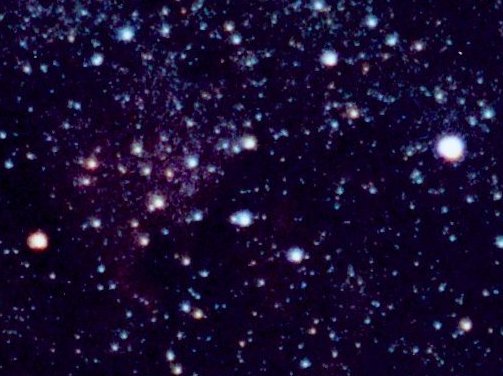
 |
First magnitude Deneb (Alpha Cygni) shines at far right, while fourth magnitude Xi (62) Cygni lies at the far left edge just below center. In between (and closer to Xi) is the faint reddish glow of the North America Nebula, NGC 7000. The luminous blue supergiant 55 Cygni is just up and to the left of Deneb. See the labelled version. |